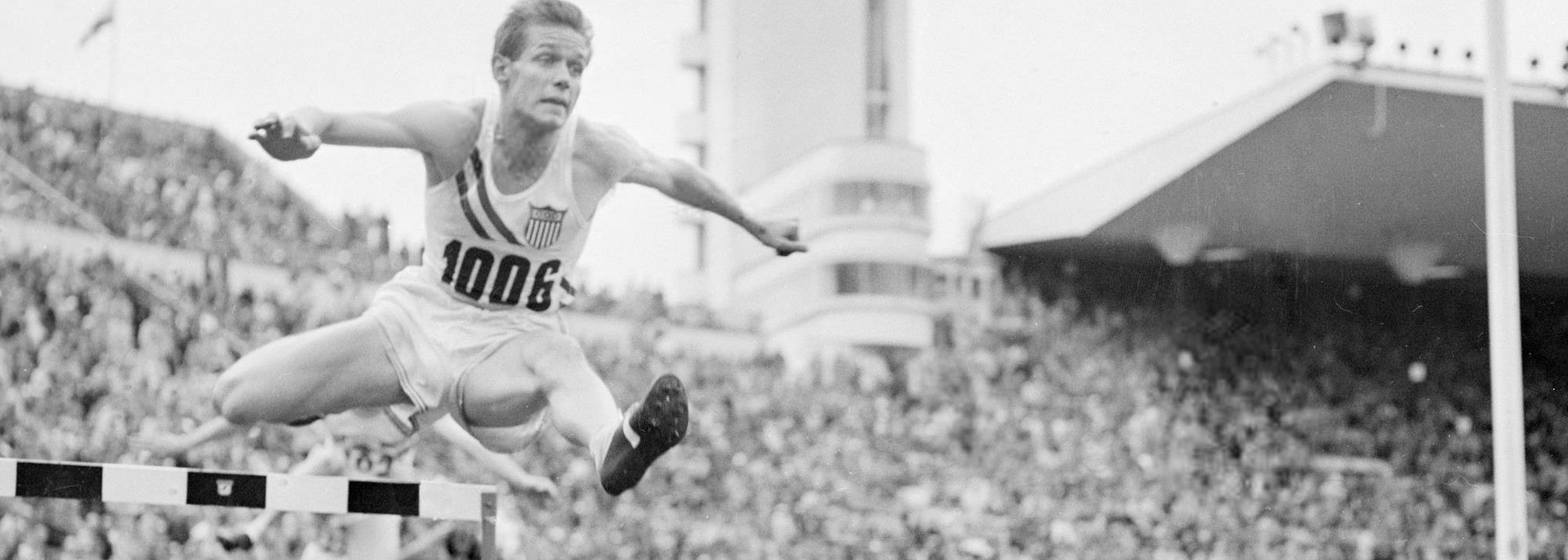1952 Olympic 400m hurdles champion Charlie Moore (© Lehtikuva)
World Athletics is deeply saddened to hear that USA’s Charles Moore, the 1952 Olympic 400m hurdles champion, died from pancreatic cancer on Thursday (8) at the age of 91.
Along with his Olympic 400m hurdles title, and Olympic 4x400m silver medal, Moore was known for pioneering the 13-step approach between hurdles, which is now commonplace among the world’s elite 400m hurdlers.
Born in Pannsylvania in August 1929, Moore’s father, also called Charles, was one of the USA’s leading sprint hurdlers in the 1920s. He was ranked fifth in the world in 1924 but didn’t compete at the Olympic Games in Paris that year after narrowly missing out on making the US team.
Charles Moore Jr was naturally steered towards hurdling when he started out in athletics at Mercersburg Academy, and he went on to win NCAA titles in the 440 yards and 220 yards hurdles, representing Cornell University.
“My father was the one whose idea it was I should make the Olympic team,” Moore said in a recent interview with the US Olympic Committee. “He was my best friend, my mentor and the guy who pushed the hell out of me. I loved it.”
One month before his 20th birthday, Moore won his first of four consecutive US titles. He also topped the world lists in each of those years (1949-1952). Moore won the 1952 US Trials in 50.7, making him the second man in history to break 51 seconds after 1936 Olympic champion Glenn Hardin.
Moore went to the Olympic Games in Helsinki as the favourite for the 400m hurdles and he underlined his dominance by cruising to an Olympic record of 50.8 in the quarterfinal. Moore matched that time in the final one day later to win gold by half a second.
He added to his medal haul by helping the USA land the silver medal in the 4x400m. The team’s time of 3:04.00 was inside the previous world record, but they were beaten to the gold medal – and world record – by Jamaica by just 0.10.
Two weeks after the Olympics, Moore went on to set two world records in the 440 yards hurdles, clocking 51.9 and 51.6, both in London. He retired from athletics at the end of that season.
Moore donated his two Olympic medals to Mercersburg Academy. “I couldn’t figure out how you divide two medals among nine children,” he said. “Mercersburg gave me my start and they’ll be there for everybody to see, including my children.”
After retiring from athletics, Moore went on to have a successful career in business, starting in his family’s steel forging company before going on to serve as CEO of several multinational manufacturing companies.
He joined the board of the US Olympic Committee as a public sector director and was chair of the audit committee from 1992-2000. He was also the governor of the National Art Museum of Sport.
Moore published two books in 2017, ‘Running on Purpose: Winning Olympic Gold, Advancing Corporate Leadership and Creating Sustainable Value’ and ‘One Hurdle at a Time: An Olympian's Guide to Clearing Life's Obstacles’.
After being diagnosed with inoperable pancreatic cancer earlier this year, Moore declined treatment. “I’ve had such a full, impactful life,” he said. “I have no regrets.”
World Athletics



